The Weeping Icon of Iveron, Stradbally Church, County Laois, Ireland
Welcome to my new weekly series: the Sunday Pilgrimage. I’ve been missing my weekly trips to holy wells - as have some of you, apparently - so I’ve been out and about again over the last few months, this time exploring (mostly) ancient Christian sites in the landscapes of Europe. On coming Sundays I will be bringing you tales from Ireland, England, Wales, Romania, Greece and possibly further afield, depending on where my life takes me.
What’s the point of this? Well, one simple answer is the same one I offered for my holy well series: I just feel like it. I like wandering around edgelands and interesting places, and now that I have a new camera I like photographing them too. But it’s more than that. I’ve always been fascinated by how humans interact with their landscapes: what they build, how they relate to nature, and how their belief systems manifest in the physical world. How we make our mark on the landscape, and how it makes its mark on us. Now that I’m a Christian, I’m especially interested in how Christianity has embedded itself in that landscape, and why.
Let’s be crude here for a moment and divide the entirety of human history up into two ways of seeing: ancient and modern. Let’s say that the ‘modern’ appears in Europe sometime in the last five hundred years, and is somehow tied up with steam power, industrialisation, coal and oil, the scientific revolution, the ‘Enlightenment’, the decline of religious faith, the rise of evolutionary theory, individualism, political revolution and notions of ‘free will’: the whole kitbag that formed the modern mind that you and I are stewing in, whether we know it or not.
What, then, might that ‘ancient’ mind have been instead? This is harder to reach now, separated as we are from it by the gulf of modernity, but I would say that its ways of seeing were more communal, less individualistic and more ‘superstitious’ and ‘religious’, as we would have it now. Notions of ‘progress’ informed by ‘reason’ or ‘the facts’ would not have made sense. Individuals were embedded in families, communities and natural landscapes, and were not ‘free’ in the modern sense. The world was an eternal, living, created thing in which humans had a role to play. Life was mostly shorter and physically harder, but was also more bounded and rooted, for better or worse, by place, custom, nature, tradition and a shared way of understanding the universe. And at its centre, in most cultures in most times, was some understanding of this thing we call ‘God.’
How this ‘God’ related to matter - to ‘nature’, or ‘creation’ - is a big question still. What is a human being, and what should our relationship to physical matter be? Sticking with crude binary divisions - hey, it’s the Internet! - let’s put some names to the two extremes of our potential relationship with matter: let’s call them gnosticism and paganism.
‘Gnosticism’ here is the assumption that matter is inherently evil. A human being is a spirit which wants to return to God - who is also a spirit - but is trapped in flesh and in the crudities of the material world. Escaping from matter and returning to the world of spirit is the task of a life. ‘Paganism’, by contrast, offers the opposite perspective: here, matter is natural and good, and there is no need to ‘escape’ anything. Nature is our home, and if we can have the correct relationship with the gods and spirits of nature, we can live in harmony with them, in mutual respect. Nature is our mother, and we obey our mother’s rules.
Christianity, historically, inhabits a ground between these two poles; or perhaps another scale entirely. It teaches that ‘creation’ - the entire material universe, including us - is the work of a great intelligence whose very nature is pure goodness. Humans have a special role in this creation, as image-bearers of this great intelligence, as co-creators, as - in my favourite image - gardeners and stewards, with the potential to become God-like ourselves. But we have wasted our potential by walking away from God - the very definition of the good - and into our own egos and wills instead - which is the path towards evil. We have walked away from God and into ‘the world’ - defined as the egotisms, vanities, lusts, wants and drives of our self-centred bodies and minds. As a result, creation has become sickened, and so have we.
Matter, in other words, to a Christian, is neither inherently evil nor inherently virtuous: it is the good creation of a good creator, which has been in some way fractured by human action. Our relationship to it has been broken in the same way. I love the stories of my wild saints because so many of them tell of how, once a man or woman has stripped away the self-centred desires that enfold us, we can return to a relationship with nature that is almost Edenic. We can go back home.
What does all this have to do with Sunday visits to Christian sites? Well, those sites are built with a certain understanding of place and nature in mind. Christianity, in that ancient way of seeing, imagined that God was intertwined with creation and could - and did - act through it. Often these acts were called ‘miracles.’ Sometimes they were less spectacular than that, and could just be understood as responses to prayer, but the prayer would often be backed up by a physical action in the world, which acted as kind of material insurance policy - for example, the leaving of offerings at holy wells. Essentially, pre-modern Christians believed, as their pagan ancestors did, that God could be reached through the material world, that He was ever-present in it, and that He sometimes acted through it for particular ends. God was not simply a spirit who lived ‘in heaven’, but a force that acted in the world. He was, in the words of an Orthodox prayer that many of us still recite daily, ‘everywhere present and filling all things.’
Modernity changed this. The Protestant Reformation took aim at the ‘superstitions’ of the ‘Popish’ Church in the West, and in doing so it ushered in the modern mindset. The Reformers attacked many obvious corruptions, such as the sale of indulgences and the wealth and vanity of various Popes, but they also attacked prayers to saints, miracles, relics, monasteries, and the veneration of statues and icons, all of which were rejected as ‘unBiblical’ idolatry. What mattered to the ‘men of the new religion’, as G. K. Chesterton called them, was the individual Christian’s personal relationship to Jesus, who alone was the intercessor between God the Father and humanity. Miracles no longer happened, and saints were no longer created. Matter became desacralised: Christianity, at least in the West, was enfolded into the modern revolution.
This modern revolution never happened in the Eastern Orthodox church, which is one reason why I was baptised into it despite being a man of the West. But things are changing now in the West too, it seems to me. What I think is happening in our historical moment is that the modern story is, in many ways, beginning to break down. A desacralised relationship with matter - with nature - no longer makes sense as we look around us at the devastation that our narrow modern minds have unleashed on the natural world and its denizens. That we have devastated our cultures and spiritual lives in the same way that we have devastated the forests and oceans seems obvious to me. We dwell now in a reign of quantity in which we are able to create technologies undreamt of by our ancestors, but we have no idea who - or what - those technologies should serve, or where they are leading us. As a result, the technologies are beginning to remake us in their own image. We are, in a very real sense, becoming machines.
I am deeply, instinctively, sympathetic to the older, pre-modern view of nature, God, matter and humanity: I think it was a better, truer vision of reality. On the other hand, I’m a modern person whose mind was trained at a Western university and who cannot escape the world he lives in, which he is currently writing about across the electrical pulses of the Internet. Like many of us, maybe, I live daily with this tension. I believe in miracles, in God, in saints, in the resurrection, and in all sorts of other weird and wonderful things that The Science cannot explain and will usually scoff at (maybe my next weekly series will be on ghosts: hold on to your hats, rationalists!) At the same time, though, I’m quite capable of being sceptical and distanced, of demanding evidence before belief, and of taking a step back from the more baroque manifestations of religion and superstition, because I know what they can do to the human mind.
But matter matters; to us, and to God. Our relationship to it, perhaps, is what defines our strange journey on this Earth. When our Christian ancestors marked places in the landscape through which to honour or connect with their creator, be they holy wells or monasteries, stone crosses or churches, they were playing this relationship out. It was never static; which is to say, it was never modern. Matter was not just dead stuff we could manipulate at will. It was loaded with meaning. God acted through the world, in all sorts of ways. Everything was alive, for good and for ill, and if we acted correctly towards it, it could change us entirely.
Let me give you a very recent example …
Stradbally is an ordinary town in the Irish midlands county of Laois, which nobody but the Irish knows how to pronounce (try and it and see). Hidden in the woods on the edge of the town, though, is a strange and curious thing: a tiny Russian Orthodox church built of solid stone …
How did the only purpose-built Orthodox Church in the whole country come to be hiding in an strip of wood across from the GAA pitch in an anonymous midlands town? Well, back in 1990 a local man, Adrian Cosby, who was the latest in a long line of an old Anglo-Irish gentry family, became an Orthodox Christian. Perhaps his background allowed him to raise the money and buy the land necessary, or perhaps he already owned it. Either way, the short version of the story is that he ended up constructing this tiny, beautiful building in the Stradbally woods, building much of it - including Ireland’s only onion dome - with his own hands, with the help of his son and local volunteers. Today it’s home to a regular congregation and regular services.
I’d been to this little church once before - it’s a squeeze inside - but back in December I went for a second time, with my daughter and a friend, for a very particular reason: a genuine, and very medieval, sort of pilgrimage. It was a freezing winter’s night, and when we arrived at the church it was clear that there were far more people than would ever fit inside. Many of us would have to stand outside, it seemed. But this was to be expected. What was happening there didn’t happen very often.
For one night only, the church was playing host to a miraculous icon: the myrrh-streaming icon of Hawaii. Myrrh-streaming icons are to the Orthodox what weeping statues are to the Catholics: there are a good few of them about, and they are fervently believed in as signs of the favour of the Mother of God. This particular icon was a very ordinary little reproduction of an original icon from Iveron Church in Moscow. In 2007, a priest in Honolulu noticed the strong smell of myrrh around his icon, and soon afterwards he noticed it apparently seeping from the thing itself. Since then, though it has varied in speed and volume, the seeping has never stopped, and now the icon is taken around the world to where the faithful can pray over it, take home samples of the myrrh, and hope that in the process the Mother of God will help them with their needs. You can read the full story here.
What’s a man to think about this? Well, I’ve gone to some length above to explain how traditional Christians see matter, and the Orthodox are perhaps the most matter-believing of all Christians today, due to the fact that modernity has never squeezed the Church in its death grip. In my experience, Orthodox Christians speak of things like myrrh-streaming icons, miraculous relics and miracles performed by long-dead saints in the same way that normal people would talk about buying a pair of shoes or going down the pub. There’s no embarrassment. It’s just the stuff of life.
So here we all were, gathered outside the wide-open doors of the beautifully-lit church on a freezing night. Inside, from what I could see over the heads of the gathered faithful, were swinging multicoloured lamps, incense burners, candles and a queue of people lining up to venerate the icon itself.
Outside it was, as we say in England, brass monkeys. I was all wrapped up, but my toes and fingers were freezing anyway. I was trying hard to feel something special, but I was mostly feeling cold. I was also feeling, as I sometimes do as a Western convert to Orthodoxy, like I was caught between two worlds, neither of which I was really inhabiting properly. On the one hand, I am genuinely able to believe in miraculous icons. Orthodox Paul has never been a materialist. Why should God not work in this way? There are enough genuine stories of these things inexplicably curing people to make a reasonable person take notice. And what other explanation could there be, anyway? A complex fraud? A priest secretly secreting a myrrh-like substance, somehow, inside an icon that everyone is watching, and travelling all around the world with it? What for? Nobody is getting rich and famous here.
So, yes: weeping icons. Why not? But on the other hand: weeping icons? Come on! This is Western, university-educated Paul speaking. He is wondering why on earth he is freezing his … toes off on an icy night to see a crying piece of wood. He is slightly embarrassed to even be here, but has decided to approach the entire evening like a good Fortean: interested in this strange and inexplicably phenomenon, though unable to explain it.
I wonder what everyone else here thinks?
I seemed to seesaw between these two feelings over the evening, depending on how cold I was. There was a long service, which involved the singing of an Akathist to the icon, before the veneration queue restarted. I joined it, of course. Despite the twittering of my inner sceptic, the dominant sense that I had was that something real was occurring. I have some experience with icons by now. There is one particular icon in one particular monastery on Mount Athos, very much a miracle-working object, that has had a hypnotic effect on me both times I have visited. I have sat in front of it for hours at a time in the cavernous, darkened church during vigils and night-time services, feeling like I was being watched. Something was happening then that was beyond what my creepy little rational mind could get at.
Soon enough, I got close to the front of the queue and could see more of what was going on inside the church:
The icon was on a small table at the centre of the church. Soon I reached it myself. I wasn’t sure what I should think or feel. On Mount Athos I had approached the icon quietly, in the dark, and sat in front of it to pray. It was a huge church, but nobody was looking at what happened in my little corner. Here, everything was public.
I venerated the icon as Orthodox people do, then took the chance to examine it. It really did seem to be seeping a lot of oil from … within the wood? It was hard to say. I had expected maybe one or two drops of it, but it was soaking the icon, and the table. I mopped some of it up with my prayer rope, which smelled delicious for the next few days. I kissed the icon, and then it was somebody else’s turn.
Afterwards there was some hot food and drink in a temporary tent behind the church, which was more than welcome in weather like this. We stood around talking about what had happened. My friend said he had experienced a powerful feeling of peace, and was still experiencing it. I wondered why I wasn’t feeling the same thing. Probably because of my inner sceptic and his annoying, naggy voice. It seemed I was a long way yet from acquiring the Orthodox phronema.
And yet. I knew there was something going on. The naggy little voice can be my helpmate sometimes. It is good to keep your reason armed and prepared. If your mind is too open, your brain might fall out. And yet we have to know when to let the unexplained through. Only Western people really think they can explain everything, or will one day be able to. I have come to learn over the years that genuinely strange and inexplicable - but real - things will creep in under the threshold of reason. Somehow you just know, at some level, that something is happening. I have felt this in different places at different times. I know when it comes.
Did I feel it that night in the church? Not really, no. But - and here’s the intriguing thing - when I woke up the next morning, I did. I thought back to what my friend had said about how peaceful he felt after kissing the icon; and the next day - all day - I felt the same. For no obvious reason, I awoke with a solid peace inside me. This is not especially normal for me. It wasn’t a simple, everyday ‘I don’t have much to do this morning’ kind of feeling. It was the deeper thing, the thing that we all know when it arrives. Perhaps my prayers to the Mother of God had ridden roughshod over that inner sceptic after all.
I thought then what it must have been like to live in pre-modern Europe. Life would have been like this much of the time. It would have been as normal as a trip to the alehouse or the taking in of the harvest: just the stuff of life. Obviously prayers work. Obviously icons weep. Obviously the saint at the well can cure your warts. Duh. This is just how the world is. Whoever could have thought otherwise?


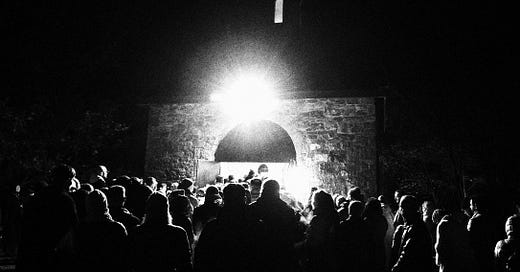



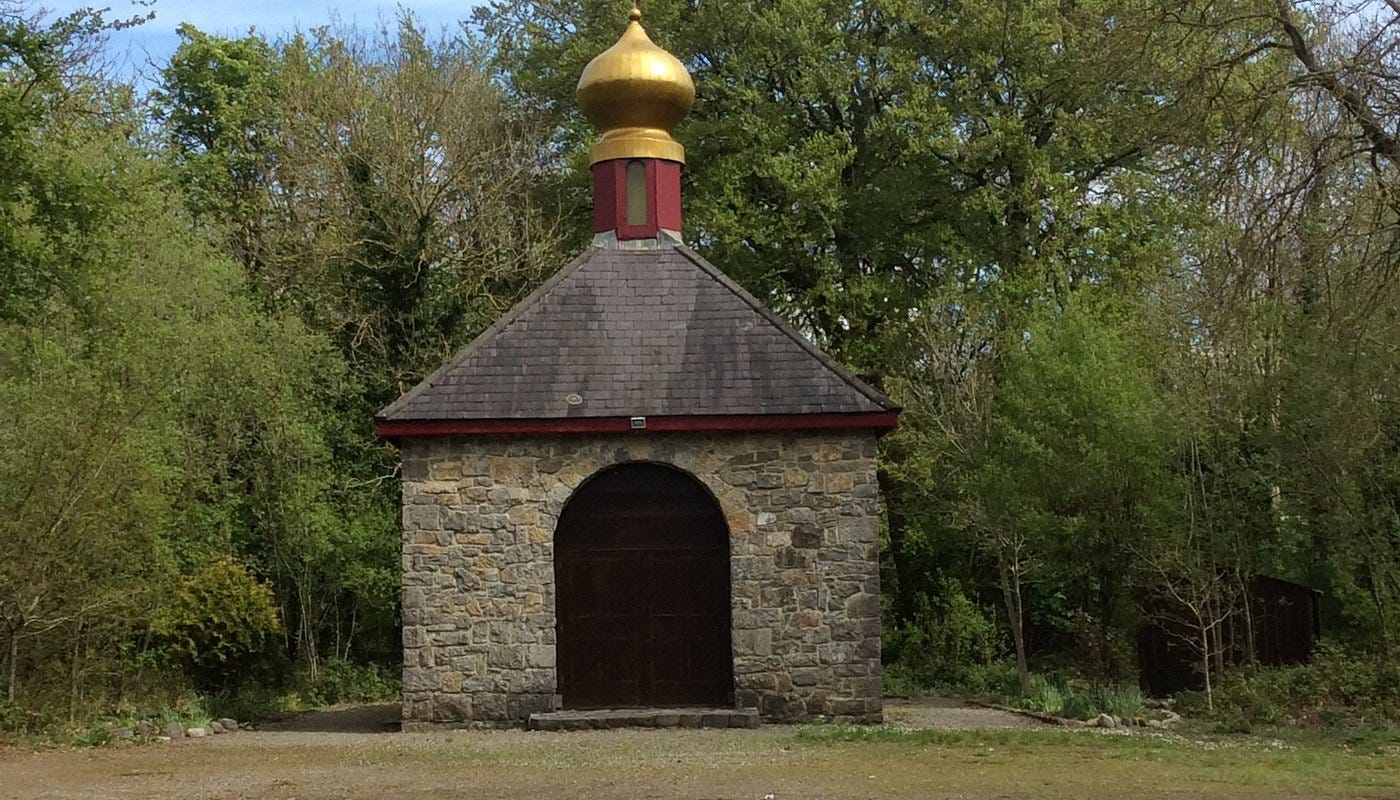
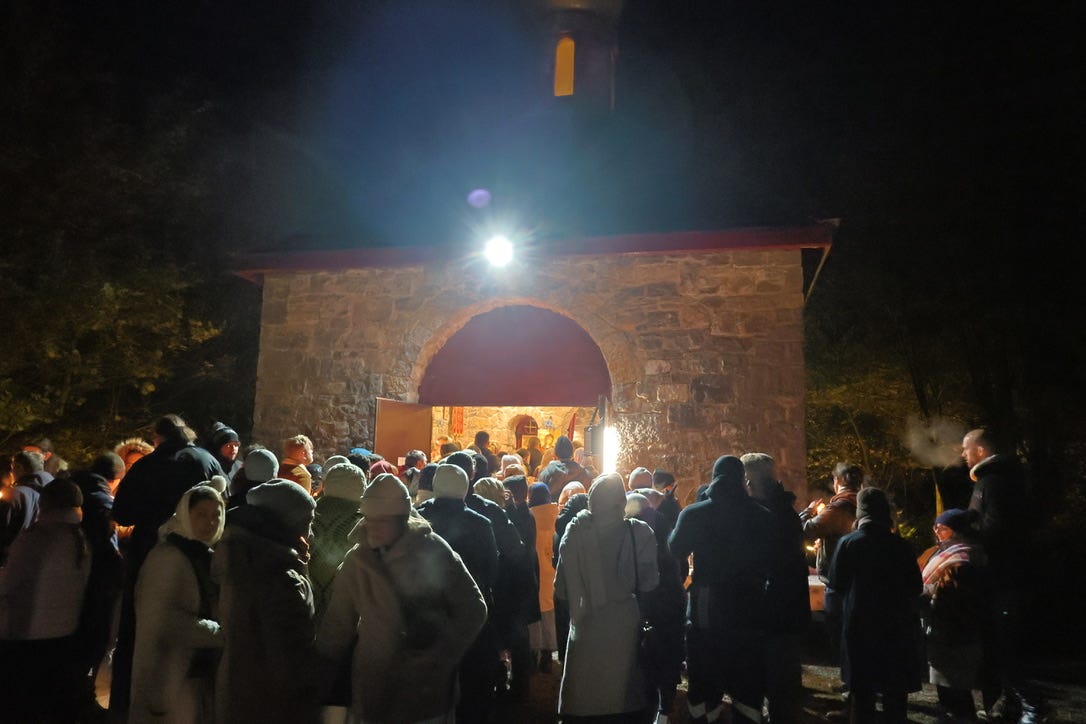
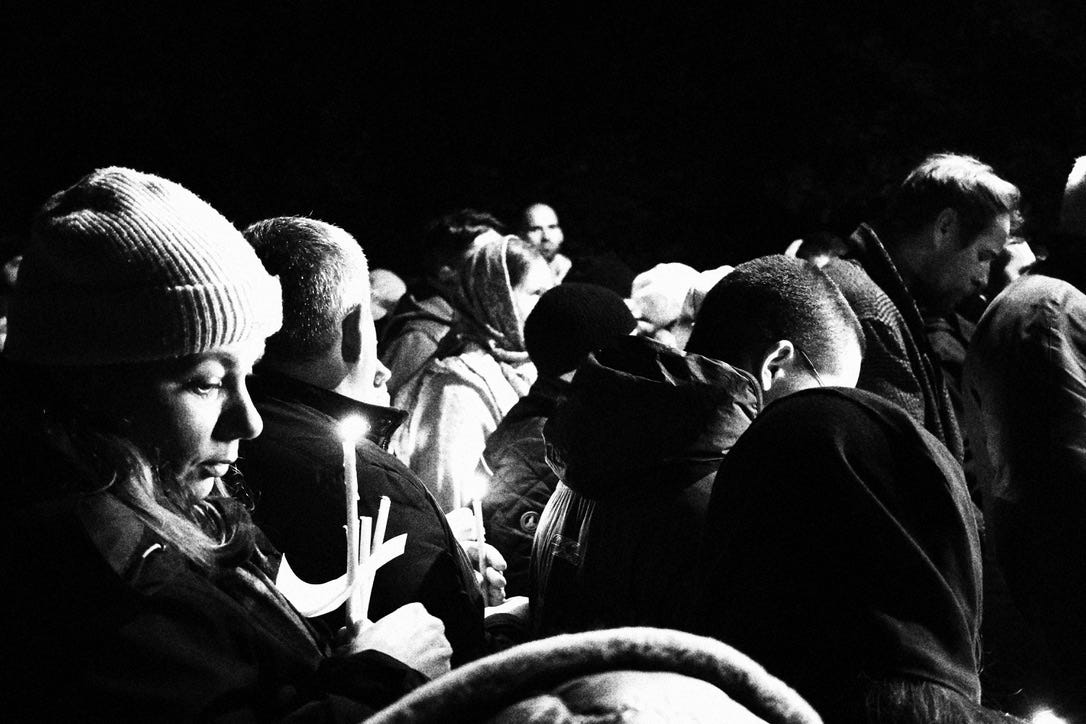
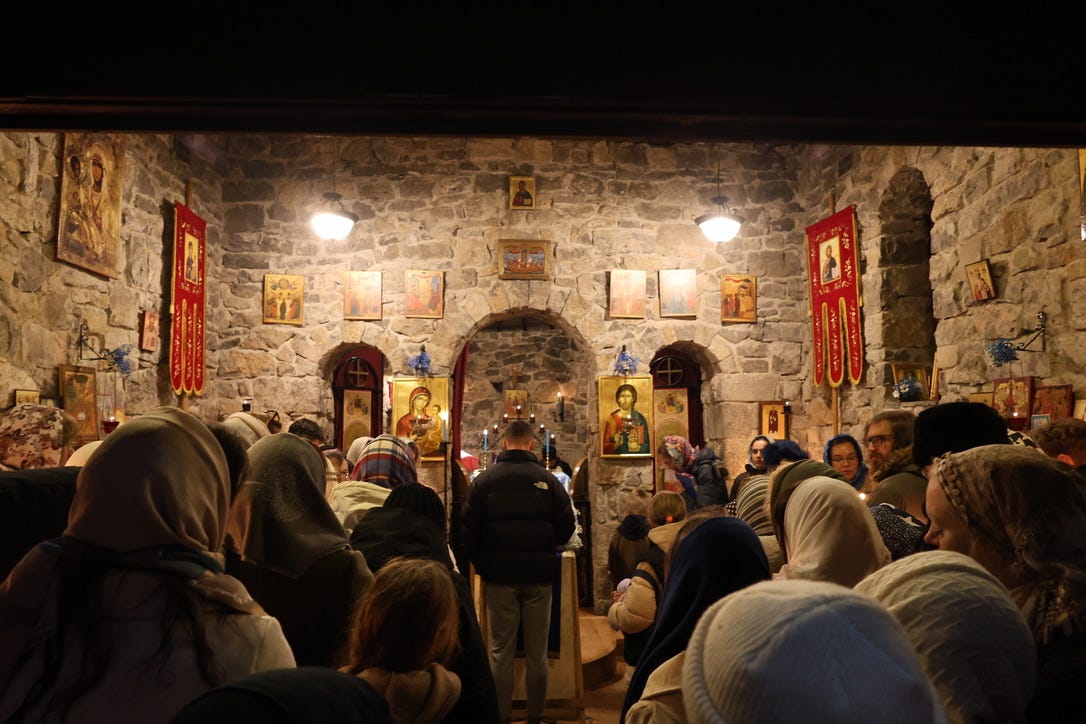
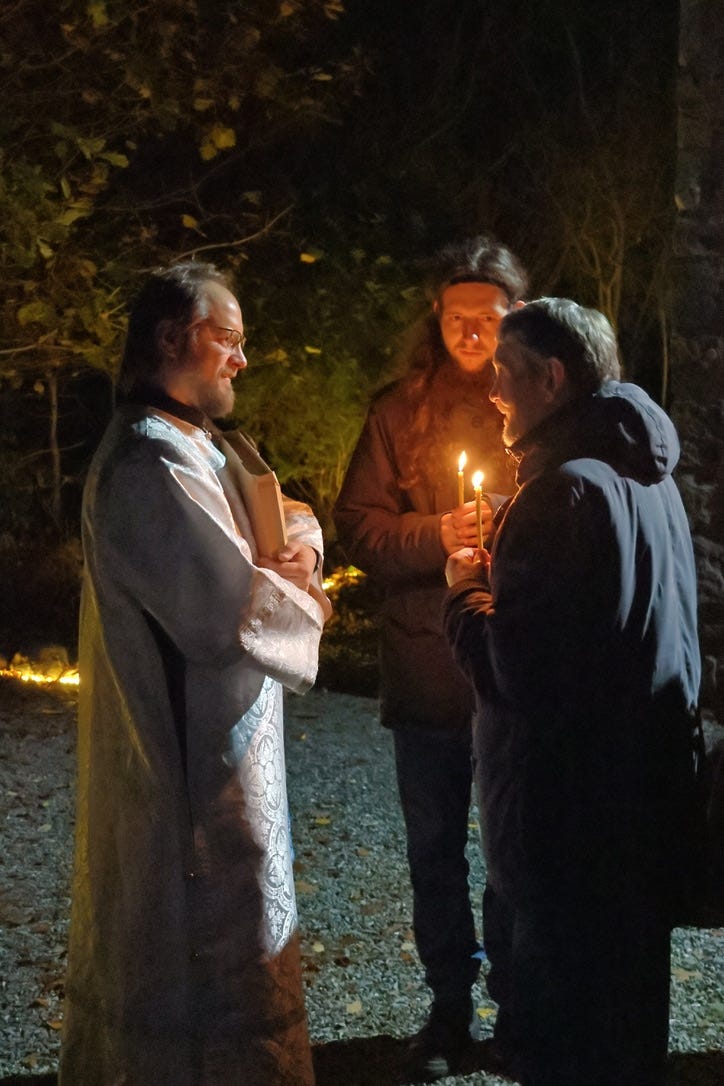
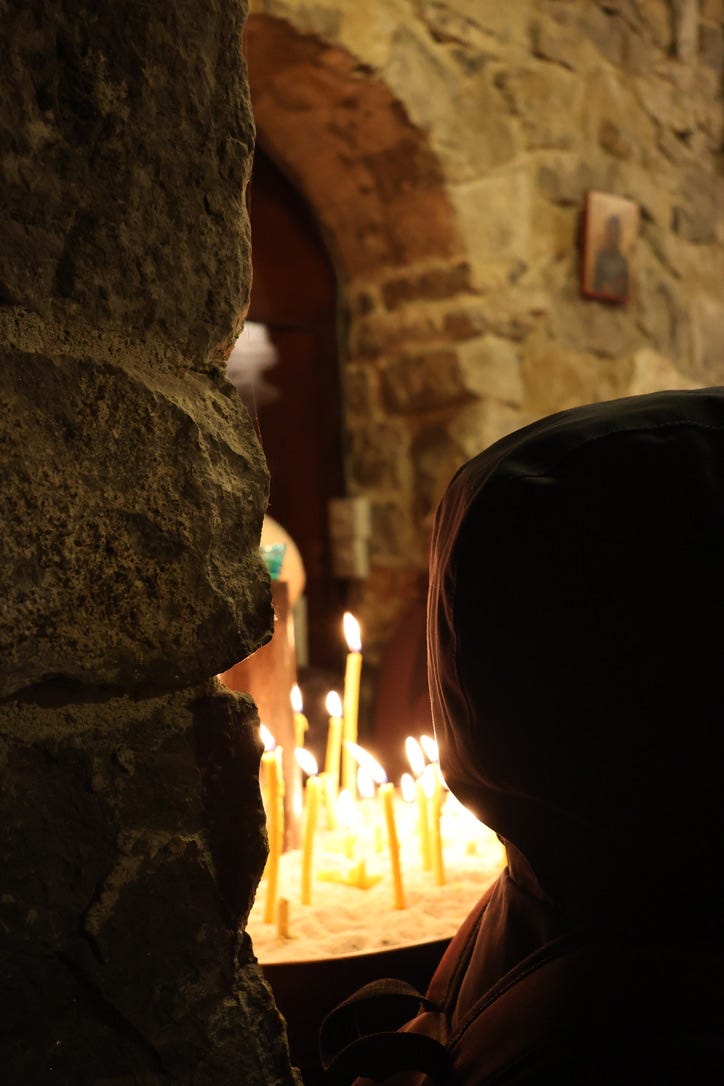
Lovely piece of writing Paul. Reminds me of my own northern Bradford Catholic childhood. We frequently left the Bradford church in the month of Mary against a backdrop of smoking chimmneys and large mills- all my family had full time work from those mills A multi generational money earner for all of them. Everyone knowing eveetyone: weavers spinners, burler and menders - a strong sense of community. This was an alternative to the dark satanic mills we read in the history books. What the books miss out is that full emplyment meant food on the table, stories to share, different cultures under the same roof. British, West Indian, Polish and Irish immigrants worked the machines alongside my parents and grandparents. My Catholuc church had a separate mass on a Sunday for the polish community- the beautiful black Madonna is still here, given in thanks for Bradford welcoming them.
Back to the month of May! We would process through the streets with the church statue of Mary and sing .hymns. Flowers were strewn around and prayers ended the gathering before food in the church hall. The sacred can always be found, even in the darkest, dampest, streets of a city.
I resonate with this so much. I often pine away for a time when Mystery was acknowledged commonly as living amongst us. Thank you for your writing Paul; it really kindles something inside of me and gives me hope in these times.